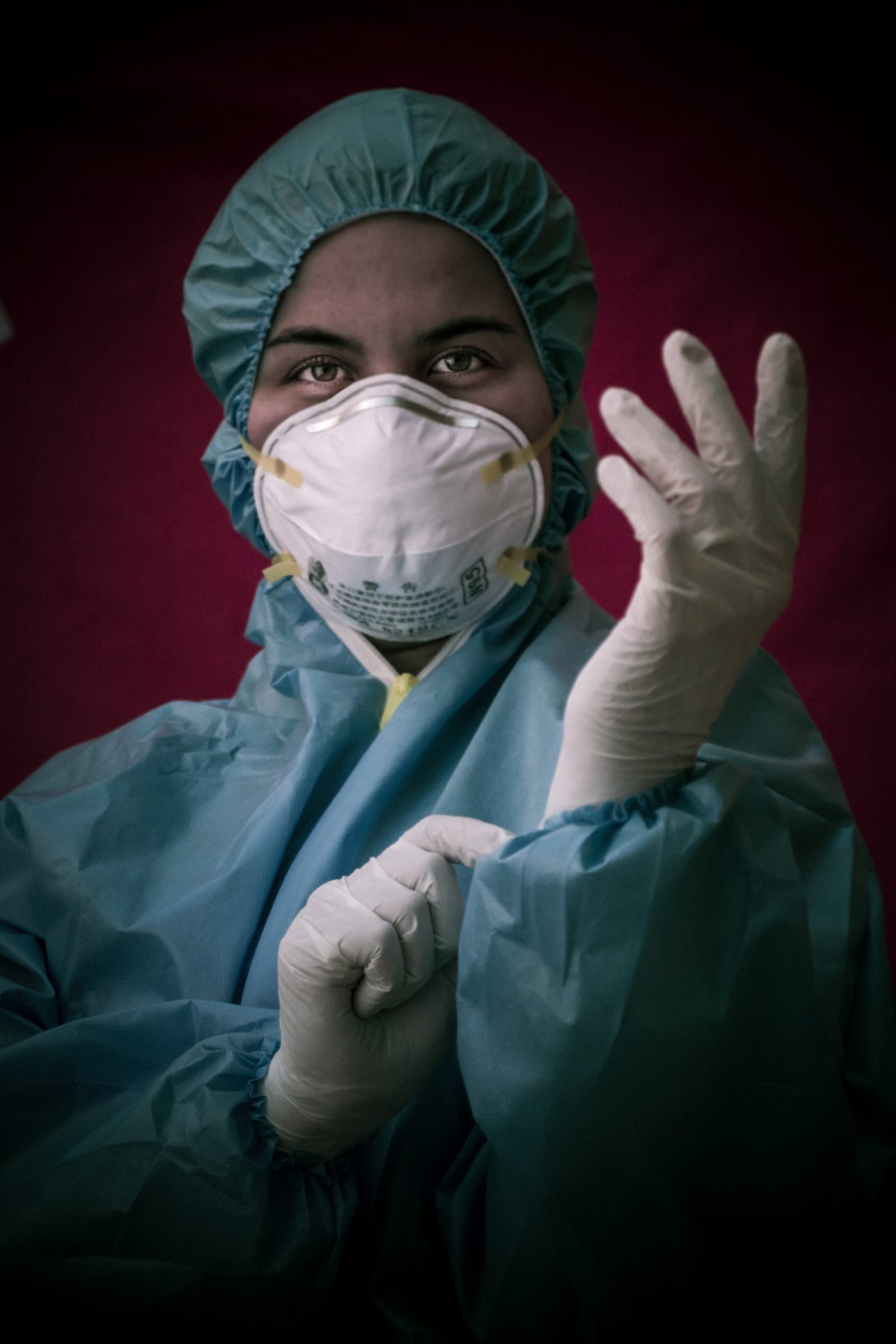PPE refers to wearable personal items that help to prevent or reduce the occurrence of occupational hazards. The outbreak of COVID 19 made it essential for nurses to wear PPE for a prolonged time.
PPE is one of the mandatory primary preventive measures required when the possibility of occupational hazards cannot be eliminated or significantly reduced at the workplace. PPE generally consists of a mask, gown, and gloves. In addition to these three, the face protection items like face-shield, goggles, head cover, coverall, and rubber boots are also a part of PPE. PPE is effective in reducing the risk of infection but prolonged use of it can cause many skin problems. According to a cross-sectional survey conducted in February 2020 on 4308 medical staff in China, the prevalence of PPE-related skin injuries is 42.8%.
The contributing factors for PPE-related skin injuries are pressure applied by equipment on the skin site and decrease air permeability to the skin surface. Pressure applied injuries are commonly due to goggles and masks that cause skin indentation, blisters, and erythema.
The use of waterproof material like rubber boots and gloves reduces air permeability which results in eczema and fungal infection. Use of head cover or helmet results in accumulation of sebum and sweat that closes pores of the scalp, and closed pores can cause folliculitis or skin lesions.
Prolonged damage to the skin due to PPE can cause skin breakdown and can result in secondary infections hence, nurses must protect their skin from PPE-related skin injuries by following simple skin-care tips.
FACE CARE
- Always clean your face before donning PPE and after removing it.
- Avoid harsh cleansers containing salicylic acid and benzoyl peroxide as they irritate the skin.
- Use mild and gentle cleansers based on your skin type. Non-comedogenic cleanser which means the ones that don’t close your pores is a good choice.
- Always moisturize your skin before wearing PPE. Moisturizer helps to keep skin hydrated. Moisturiser makes a barrier between skin and PPE leads to less chance of injury.
- Use ceramide-containing moisturizer as it helps in providing a healthy skin barrier. Glycerine-based moisturizers are also a good choice as they maintain hydration by retaining moisture back in the skin.
- Allow time for goggles to dry after cleaning with wipes before donning them.
- It’s better to apply moisturizer 30 minutes before donning the PPE that allows the skin to get dry, as wet skin reduces the efficacy of PPE.
- For natural hydration of skin drink at least 8 glasses of water every day.
- Don’t wear any cosmetics under PPE to prevent clogging of pores due to debris accumulation.
PREVENTING PRESSURE INJURIES
- Use well-fitted masks and goggles. Use tie-up masks rather than elastic masks as elastic masks cause more pressure over-ear and face in comparison to tie up masks
- Ensure before starting your work that the mask is properly fitted. The improperly fitted mask requires frequent fixing which leads to skin rashes and irritation.
- Many experts recommend wearing the mask for only two hours in the stretch. Take a five minutes break after 2-3 hours to remove the mask and allow your skin to recover and breathe.
- Liquid barrier films can be used before wearing PPE. These barrier films coat the skin with a protective layer that helps in protecting skin from chemical and mechanical injury.
- Apply hydrocolloid dressing overpressure sites like the forehead, bridge of the nose, and other areas before wearing the PPE.
- An article published in May 2020 also recommended the use of hydrocolloid dressing over the forehead, dorsum of nose, and cheeks to prevent chaffing of the skin during the COVID-19 crisis.
FEET CARE
- Avoid excessive sweat by properly washing your feet after removing PPE and before bed.
- Moisturise feet same like face to protect the skin from irritation
- Wear good quality socks. Wicking socks are recommended as they absorb moisture effectively.
- Keep a pair of extra socks to change in case of excessive wetness.
- Inspect your feet regularly for signs of skin issues like eczema.
MISCELLANEOUS TIPS
- Use warm water not hot or cold for bath and face wash
- Avoid excessive use of hand wash if possible to avoid hand dermatitis. Use sanitizer instead if hands are not visibly dirty.
- Keep hair off your neck to avoid sweating and discomfort.
- Wear loose garments (preferably cotton or wicking clothes) under PPE.
- Choose properly fitted undergarments as tightly fitted undergarments cause skin irritation.
- If any doubt regarding your skin type or skin problems always consult a dermatologist.
Personal protective equipment is one of the best measures followed by nurses to reduce the risk of infection but it also puts the nurse’s skin at risk of getting injured. The prolonged use of PPE is found to be associated with many skin-related injuries hence nurses must take appropriate measures to prevent such injuries.


